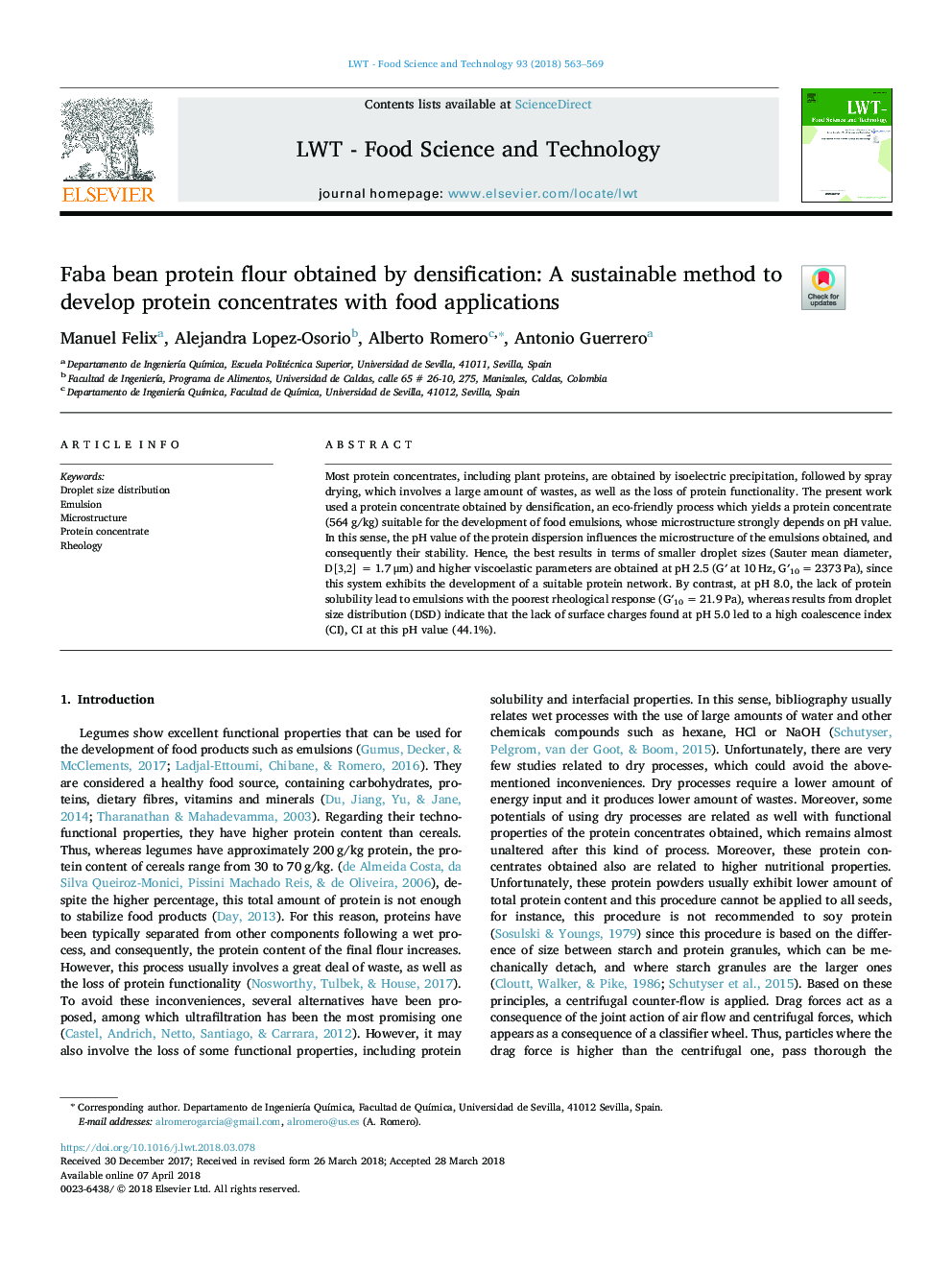| Article ID | Journal | Published Year | Pages | File Type |
|---|---|---|---|---|
| 8891088 | LWT - Food Science and Technology | 2018 | 7 Pages |
Abstract
Most protein concentrates, including plant proteins, are obtained by isoelectric precipitation, followed by spray drying, which involves a large amount of wastes, as well as the loss of protein functionality. The present work used a protein concentrate obtained by densification, an eco-friendly process which yields a protein concentrate (564â¯g/kg) suitable for the development of food emulsions, whose microstructure strongly depends on pH value. In this sense, the pH value of the protein dispersion influences the microstructure of the emulsions obtained, and consequently their stability. Hence, the best results in terms of smaller droplet sizes (Sauter mean diameter, D[3,2] â¯=â¯1.7â¯Î¼m) and higher viscoelastic parameters are obtained at pH 2.5 (Gâ² at 10â¯Hz, Gâ²10â¯=â¯2373â¯Pa), since this system exhibits the development of a suitable protein network. By contrast, at pH 8.0, the lack of protein solubility lead to emulsions with the poorest rheological response (Gâ²10â¯=â¯21.9â¯Pa), whereas results from droplet size distribution (DSD) indicate that the lack of surface charges found at pH 5.0 led to a high coalescence index (CI), CI at this pH value (44.1%).
Related Topics
Life Sciences
Agricultural and Biological Sciences
Food Science
Authors
Manuel Felix, Alejandra Lopez-Osorio, Alberto Romero, Antonio Guerrero,
